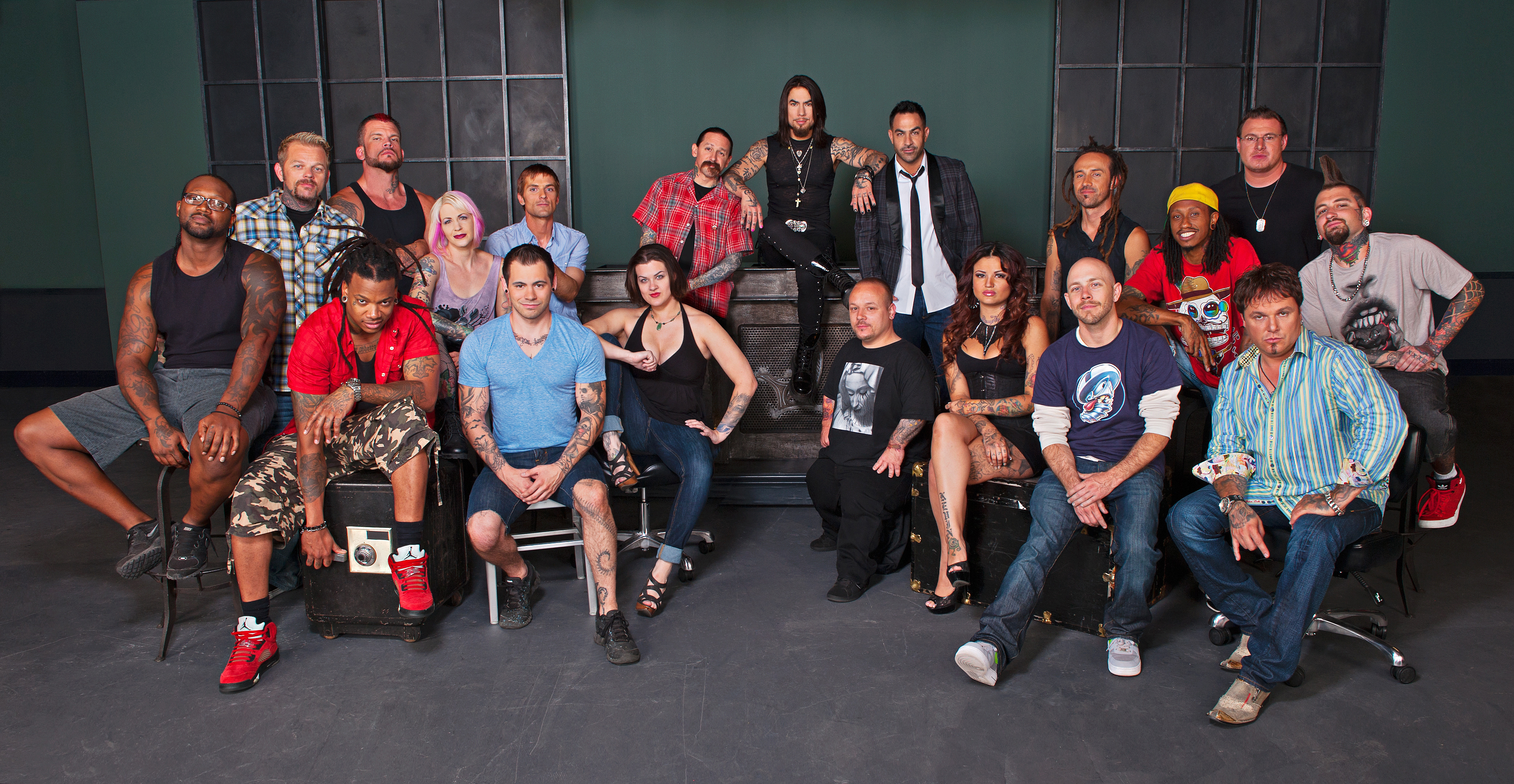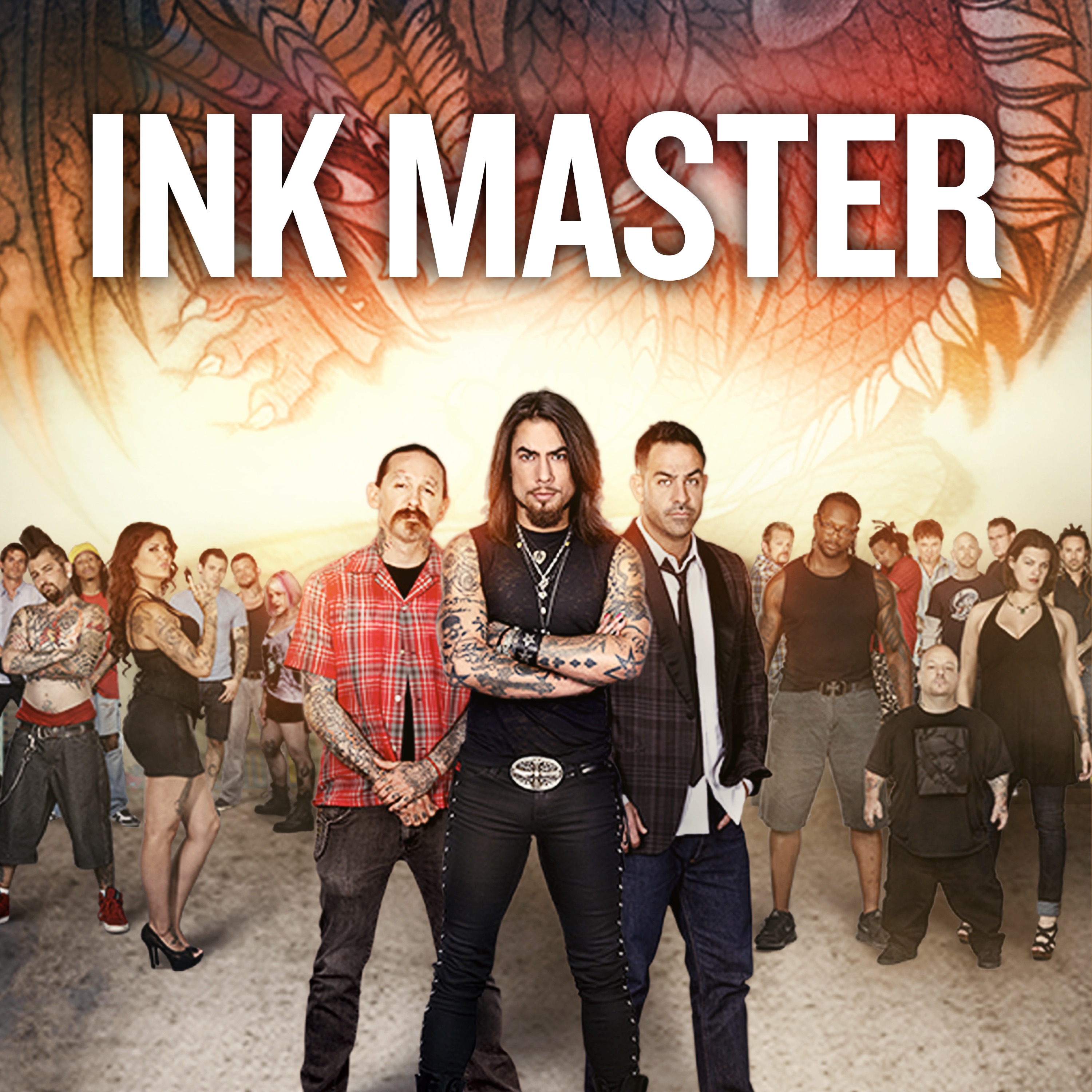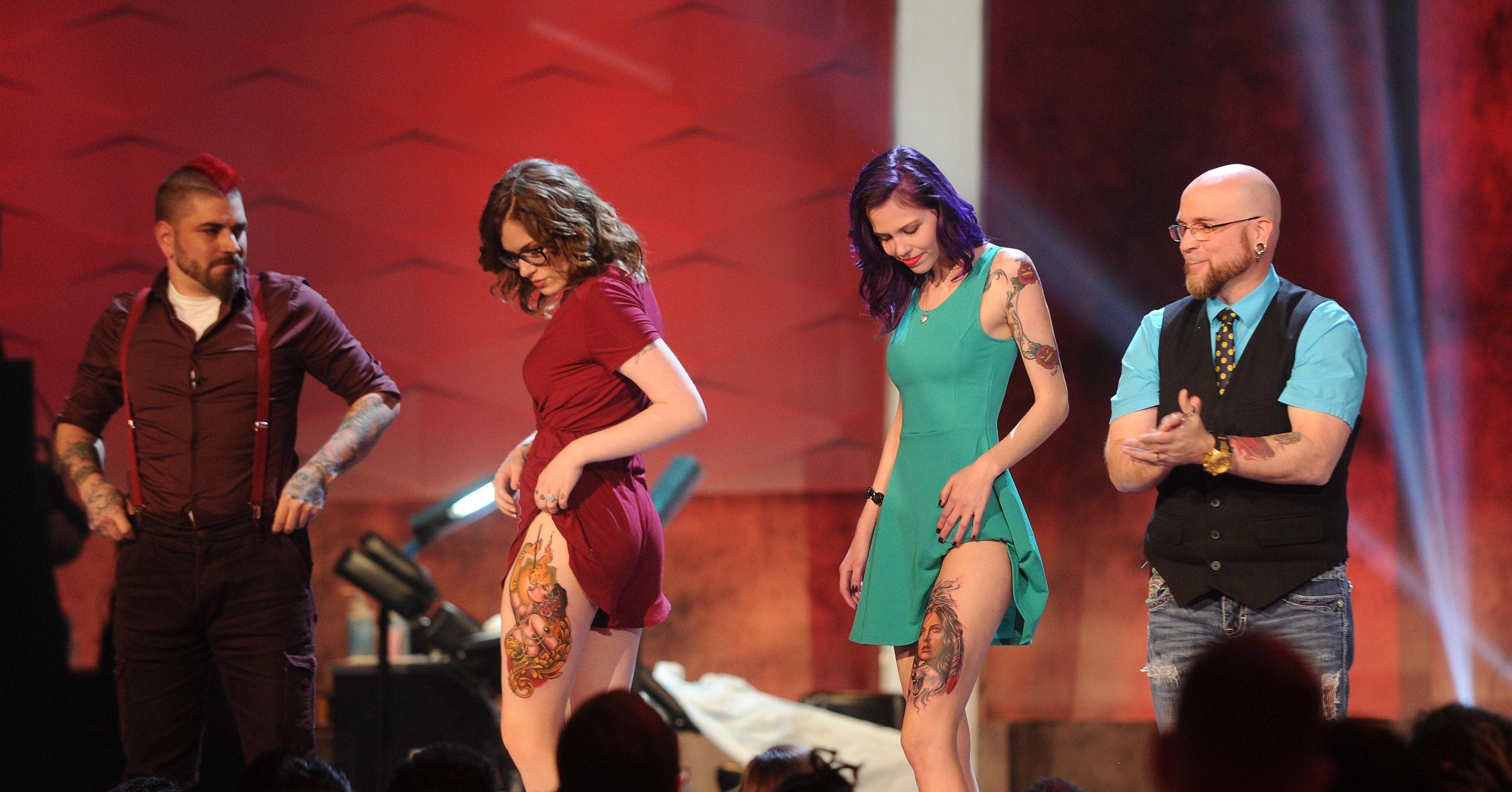Do you ever think about those particular stretches of time, like a natural season, where everything just feels a certain way, or when specific kinds of things tend to happen? Much like how the Earth's yearly trip around the sun brings about distinct periods, each with its own weather conditions and daylight amounts, television shows, too, have their own "seasons" that bring unique atmospheres and moments. And when we consider the world of competitive tattooing, that, like, definitely holds true for a show that truly left its mark on many viewers.
Each stretch of a show, you know, it has its own unique flavor, its own set of circumstances that make it stand apart. Just as a year's division into spring, summer, fall, and winter means a shift in the air and the kinds of plants and animals we see, a new run of a program often brings fresh faces, different tests, and new stories to follow. It's almost as if the very air around the competition changes with each new installment, bringing with it a whole new set of expectations and challenges for those involved.
So, we are going to take a moment to look back at a very specific period, a time when the needles buzzed and the pressure was on for a group of truly talented artists. This was a particular stretch of the Ink Master series that, in many respects, set a very high standard for what was to come. It’s about that second run, that second distinct period, of intense artistic competition where folks really got to show what they could do under pressure.
Table of Contents
- The Story of Season 2 of Ink Master
- Key Details of Ink Master Season 2
- What Made Season 2 of Ink Master Stand Out?
- Who Were the Memorable Faces of Season 2 of Ink Master?
- How Did the Challenges Shape Season 2 of Ink Master?
- The Artistic Highs and Lows
- What Was the Vibe Like During Season 2 of Ink Master?
- Looking Back at the Impact of Season 2 of Ink Master
The Story of Season 2 of Ink Master
Every show has its own kind of story, a progression of events that makes up its particular existence, and that, you know, certainly applies to the second go-round of Ink Master. This particular run of episodes, it was a period that truly brought a fresh wave of creative folks into the public eye, all competing for a rather significant title. It was a time when the show began to truly find its rhythm, establishing many of the elements that viewers would come to expect and enjoy in later years. The setting was the same, a tattoo shop where the pressure was always on, but the cast of characters and the specific tests they faced gave this run its own special feel, much like how one autumn differs from another, even though they are both autumn.
You see, this specific period, this second "season," if you will, was where the program really started to gain serious traction with its viewers. It showed a distinct growth from its initial run, offering more complex and, well, honestly, more dramatic moments that kept people glued to their screens. The format, too, seemed to settle into a groove, allowing for a more natural flow of competition and personal stories. It was a time when the artistic abilities on display seemed to reach new levels, pushing the boundaries of what many thought possible in the world of skin art. The narrative arc, from the initial introductions to the final showdown, felt a bit more defined, giving the audience a clearer sense of who to root for and who to watch out for.
In some respects, the unfolding of this particular run felt a lot like the progression of a year itself. There were moments of bright, sunny creativity, where the art just seemed to flow effortlessly from the artists' hands, and then there were, like, those stormier periods, full of tension and unexpected twists. Each week brought a new set of conditions, a new test of skill, requiring the artists to adapt and show their true colors. It was a time that truly tested their versatility, their patience, and their ability to work under immense pressure, making it a rather compelling watch for anyone who enjoys seeing talent put to the test.
Key Details of Ink Master Season 2
| Air Dates | October 9, 2012 – December 18, 2012 |
| Number of Episodes | 11 |
| Winner | Steve Tefft |
| Judges | Chris Nunez, Oliver Peck |
| Host | Dave Navarro |
| Number of Artists | 16 |
What Made Season 2 of Ink Master Stand Out?
When you look back at the different periods of Ink Master, you might wonder what it was about this specific stretch, this particular "season," that really made it memorable. Well, for one thing, it was the raw, undeniable skill on display. The caliber of the artists seemed to take a noticeable jump, bringing with them a higher level of technical ability and creative thinking. This meant that the pieces created were often more intricate and visually pleasing, even under the tight deadlines and the intense scrutiny of the judging panel. It was a time when the artistry truly shone through, giving viewers a real appreciation for the craft involved.
Then there was the personal element, the way the different personalities interacted, sometimes clashing, sometimes forming unexpected alliances. Just like how the different elements of a natural environment interact to create a specific climate, the various temperaments of the artists created a unique atmosphere within the competition. You had moments of genuine camaraderie, where artists would help one another, and then, you know, moments of rather intense disagreement, where the tension in the room was almost something you could touch. This human element added a layer of depth to the program, making it more than just a display of artistic talent; it became a study of human nature under pressure.
The challenges themselves, too, played a big part in making this period distinct. They seemed to push the artists in ways that were both fair and incredibly demanding. Whether it was working on a specific style that wasn't their usual preference or dealing with a client who had very particular requests, each test required a different kind of mental and artistic flexibility. This variety kept things fresh and unpredictable, meaning that even if you thought you knew who might do well, a new challenge could completely change the dynamic. It was a true test of adaptability, a characteristic that is rather important for any artist who wants to make a lasting impression.
Who Were the Memorable Faces of Season 2 of Ink Master?
Every significant period of a show, like a distinct time of year, is often defined by the individuals who populate it, and the second run of Ink Master was no different. There were, you know, a number of artists who truly left a lasting impression on the audience, some for their exceptional skill, others for their compelling personalities, and some for a combination of both. These were the people who, in a way, shaped the very atmosphere of this particular "season," much like certain weather patterns define a summer or a winter.
You had folks who were quiet and focused, letting their work speak for itself, and then there were others who were more outspoken, adding a bit of spark to the daily interactions. The range of artistic styles represented was also quite wide, meaning that viewers got to see a lot of different approaches to tattooing. This variety made each episode feel fresh and interesting, as you never quite knew what kind of artwork would appear next. It was, in some respects, a true showcase of the diverse talents that exist within the tattoo community, bringing a lot of different perspectives to the forefront.
The judges, too, played a rather important part in shaping the experience of this run. Chris Nunez and Oliver Peck, with their distinct points of view and their deep understanding of the craft, provided feedback that was often insightful, sometimes harsh, but always honest. Their presence helped to set the tone for the competition, reminding everyone of the high standards that needed to be met. And, of course, Dave Navarro as the host brought his own unique energy, keeping things moving and adding a bit of rock-and-roll flair to the proceedings. Their combined presence, you know, definitely contributed to the overall feeling of this particular period of the show.
How Did the Challenges Shape Season 2 of Ink Master?
The tests, or "challenges" as they were called, during the second run of Ink Master were, in a way, the driving force behind the entire period, much like how the Earth's position relative to the sun dictates the changes we see in natural seasons. Each week brought a new set of rules and a new canvas, pushing the artists to adapt their skills and think quickly on their feet. These were not just simple tasks; they were carefully thought-out trials designed to expose strengths and weaknesses in equal measure. It was a constant test of versatility, requiring artists to step outside their comfort zones quite often.
Some tests focused on specific styles, asking artists to create pieces in, say, traditional Japanese or realistic black and grey, even if that wasn't their usual way of working. Other times, the challenge might involve working on a difficult body part or covering up an old, unwanted tattoo, which, you know, is a skill that truly separates the good from the great. These types of tests really showed who could handle pressure and who had a broad range of abilities. It wasn't just about making a pretty picture; it was about solving a problem with ink and needle, under a very strict time limit.
Then there were the "flash challenges," which were often about speed and immediate creative thinking, sometimes involving mediums other than skin, like painting or sculpting. These quick-fire tests kept everyone on their toes and often determined who got an advantage or, conversely, who faced a disadvantage in the main elimination tattoo. The variety in these challenges meant that every episode felt a little different, ensuring that the competition never grew stale. It was a constant cycle of new demands, much like the changing weather patterns we see throughout a year, keeping everyone on their toes, artists and viewers alike.
The Artistic Highs and Lows
Every competitive period, whether it's a sports season or a creative contest, has its moments of triumph and its moments of struggle, and the second period of Ink Master was certainly no exception. There were times when the art created was simply breathtaking, pieces that truly captured the eye with their striking appearance and precise execution. These were the moments when an artist truly hit their stride, producing something that not only met the requirements of the challenge but went above and beyond, leaving a lasting impression on the judges and the audience. It was, you know, a real joy to witness those instances of pure artistic brilliance.
However, as with any competition that pushes people to their limits, there were also instances where things didn't quite go as planned. Sometimes, an artist might struggle with a particular style, or perhaps the pressure of the moment got the better of them, leading to a piece that didn't quite measure up. These were the "lows," the moments of disappointment that are, like, an inevitable part of any high-stakes contest. Yet, even in these struggles, there was often a lesson to be learned, a chance for the artists to reflect on their work and grow from the experience. It showed the human side of the competition, reminding us that even the most talented individuals have their off days.
The critiques from the judges, too, often highlighted these highs and lows in a very direct way. They weren't afraid to call out mistakes or to praise exceptional work, providing a clear picture of what was expected at this level of the craft. This feedback, while sometimes difficult to hear, was a crucial part of the learning process for the artists, helping them to refine their techniques and approach their next piece with a fresh perspective. It was a cycle of creation, evaluation, and adaptation, much like the natural world's constant adjustments to changing conditions, always pushing for improvement.
What Was the Vibe Like During Season 2 of Ink Master?
The overall feeling, the atmosphere, during the second run of Ink Master was, in a way, a blend of intense competition and a sort of shared artistic passion. It wasn't just about winning; it was also about the love of the craft itself, even when things got heated. You could feel the tension in the air during the eliminations, that, like, palpable sense of anxiety as artists waited to hear their fate. But then, in other moments, you would see genuine respect among the competitors, a recognition of each other's skill and dedication. It was a very unique blend of emotions, making the entire period quite captivating to watch.
The show managed to capture the essence of what it means to be a working tattoo artist, with all the pressure of client demands and the need for precision. It brought that world into living rooms, allowing viewers to get a glimpse behind the curtain, so to speak. The personalities of the artists, their quirks and their strengths, contributed greatly to this feeling, making them feel like real people rather than just contestants. You found yourself rooting for some, perhaps feeling a bit frustrated with others, but always, you know, invested in their journeys.
There was also a distinct sense of progression throughout this period. As the competition wore on, the stakes got higher, and the challenges became even more demanding. This created a natural build-up of excitement, leading to a rather thrilling finale. The feeling in the room, and for the viewers at home, shifted from week to week, much like the subtle changes in the air as one natural season transitions into another. It was a dynamic and engaging experience, keeping everyone on the edge of their seats right up until the very end, wondering who would ultimately prove themselves to be the master of the ink for this particular run.
Looking Back at the Impact of Season 2 of Ink Master
When we look back at the second period of Ink Master, it's pretty clear that it left a significant mark, not just on the artists who participated, but also on the wider world of tattooing and reality television. It helped to solidify the show's place as a staple for fans of the art form, proving that there was a real appetite for seeing this kind of creative competition unfold. The success of this run, in a way, helped to pave the way for many more "seasons" to come, each building on the foundation that was laid during these early days. It showed that the format had staying power and could continue to draw in a dedicated audience.
The artists who took part in this specific run, too, often saw their careers get a noticeable boost. Being on a program of this nature, with such a wide reach, brought their work to a much larger audience than they might have otherwise reached. Many of them went on to achieve even greater recognition within the tattoo community, opening their own shops, appearing at conventions, and generally, you know, elevating their standing in the craft. It was a launching pad for many talented individuals, giving them a platform to showcase their abilities to the entire world.
Moreover, this period contributed to a broader appreciation for tattooing as a legitimate art form. For many years, tattoos were often viewed in a very specific, sometimes narrow, way. But programs like Ink Master, and especially compelling runs like this second one, helped to change public perception, showing the incredible skill, creativity, and dedication that goes into creating these permanent pieces of art. It helped to bring the art form into the mainstream, encouraging more people to see it for the intricate and expressive medium that it truly is. It was a time that, in some respects, truly helped to shape the future direction of the show and the public's view of tattooing as a whole.


